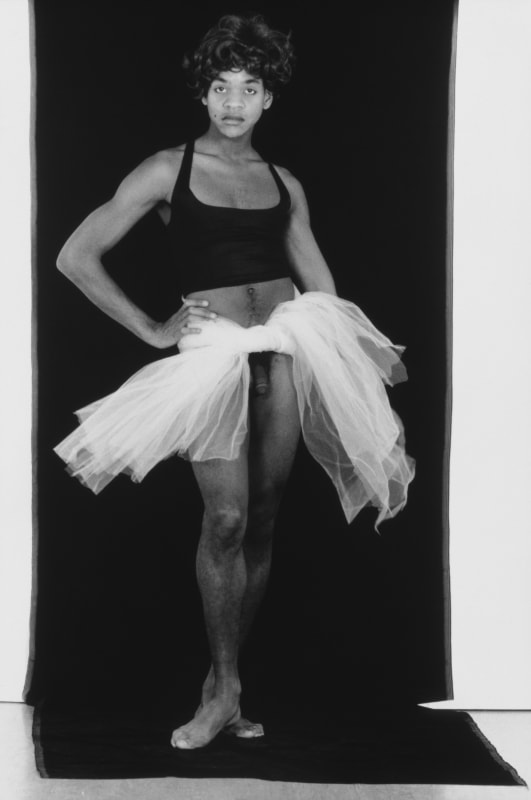Through the works of Nobuyoshi Araki, Francesco Clemente, David LaChapelle, McDermott and McGough, Lyle Ashton Harris, Hank Willis Thomas, Sue Williams, and the artist group Toiletpaper by Maurizio Cattelan and Pierpaolo Ferrari, Body & Soul explores how the human body is portrayed, taking in morphology and spirituality.
The painting the Birth of Venus by Sandro Botticelli created between 1484 and 1486, glorifies the female body in all its divine beauty and sensuality. David LaChapelle’s contemporary version addresses the gradual change of approach to the depiction of the female body. In his version of the original painting, Venus is a tanned blonde, wearing a golden crown and a pair of jewel-encrusted heels. Unlike Botticelli’s painting, Venus is hypersexualized according to the beauty standards of current society, and there is an air of eroticism as symbolized by the conch shell held by one of the two men flanking her.
The aesthetic canons have depended on the values of a society in their given time. Ideals have varied widely from culture to culture, a reminder that diversity is integral to the human condition. As the body remains a means for expressing identity, many artists see the body as a way of commenting on identity politics: gender, sexuality, race, and ethnicity. In contemporary art, the representation of the body isn’t influenced by dogmas, canons, or schools, and doesn’t necessarily seek a positive reaction from the public. Rather they tend to seek a visual and intellectual statement through their art.
The works of Hank Willis Thomas and Lyle Ashton Harris presented in this exhibition are exemplary of this thought process. Their works convey powerful messages regarding identity, politics, and history through the reflection of stereotypical thought and the wounds of history. Using commercial campaign strategies, Hank Willis Thomas reveals how branding has shaped contemporary and historical Black identity in American culture, denouncing its embedded racism. Lyle Ashton Harris centers his work on the question of gender and identity using his own body to probe collective ideas about Black and queer identities.
While the photographs of Nobuyoshi Araki and the semi-abstract works of Sue Williams focus on the violent and erotic side of desire and the human body, McDermott and McGough explore it through the lens of popular culture. In their paintings of film stills, religious and sexual practices are explored through the subversion of the obvious by incorporating homoerotic and art historical references.
Departing from the human body, this exhibition also looks at the immaterial side of the human body: the soul. While the body remains Francesco Clemente’s central subject, his work is deeply rooted in spirituality. Taking note from Hindu tradition, his series ‘Talisman’ connects the body to current emotions and common experiences. The placement of a talisman above genitals is a hymn to the body, elevating the body to a higher spiritual place. The mirror work by the artist group Toiletpaper, calls visitor’s attention to their bodily presence, triggering acts of affective, behavioral, and empathic mirroring. The viewer becomes aware of his corporeal presence triggering also the soul.
This exhibition celebrates the body and the soul as a whole: an invitation to reconnect with ourselves and others.
Curated by Claire di Felice




















